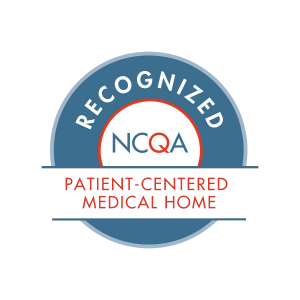
Time has shaken me by the hand, and Death is not far behind.
John Wesley (1791)
With modern health care, we often have options near the end, regarding extensive medical treatments or comprehensive comfort care. Making our preferences known about end of life care may spare our family and ourselves added stress and suffering.
The majority of us come to the brink of death without having planned what we might want to happen, or not to happen. Decisions about future care takes into account personal and cultural considerations, with input from family, specialists and spiritual advisors. Your Primary Care provider is a good resource. Even with help, it is a very personal endeavor.
The time around a person’s death can be a time of celebration for a whole life’s accomplishments. Easing the burden for end-of-life decisions helps family with this, midst the sadness of loss
Advanced Directives (AD)
An Advanced Directive is a set of written medical instructions that can be given to your Proxy and to Physicians, to help guide them in your medical care if you cannot express your wishes. These plans are best developed ahead of any debilitating illness. There is a specific State of Oregon AD form, in accordance with the Oregon Health Care Decisions Act which may be modified by adding other specific requests. Two adults must witness the person’s signing the advance directive.
Health Care Instructions in Advanced Directives may be general, but should not be unclear in specific instances. Conditions where recovery is likely might be dealt with differently than seriously debilitating progressive or terminal illness.
Special instructions and conditions can be added to the Health Care Plan or included for your proxy, as long as they don’t deal with distribution of property. Adults of any age can consider Organ donation, and many do as they make their end of life plans.
Durable Power of Attorney for Health Care
A Proxy (or Health Care Representative, Agent, or Durable Power of Attorney for Health Care) is someone you trust to understand your wishes, who will make medical decisions for you when you are not able, in accordance with your Advanced Directives, but also when those do not fit the specific circumstances. This person is at least 18 years old. Your Health Care Representative and an alternate need to sign the document to accept their appointment. You can revoke their appointment at any time.
Financial matters such as Wills and Trusts ought not be put off to the last minute, though it is human nature to delay. If details are complicated, an estate planner might help. A Durable Power of Attorney (for financial affairs) gives a person of your choice the ability to make financial decisions for general or specific financial issues as you authorize, if you are unable. This arrangement ends with the death of the patient; the responsibility may begin with the signing of the form, or at a future, “springing” into effect date. A general Durable Power of Attorney is for financial affairs, not health care decisions.
POLST
POLST The Physician Orders for Life-Sustaining Treatment (POLST form) has specific “doctor’s orders” that tell Emergency Medical Techs (EMTs), etc, the guidelines you want for the medical care you are given, when you cannot tell them directly. These pink forms were first developed in Oregon in 1991, and spread through the US. There are some basics to the forms, including Code status, level of care, and artificial hydration or nutrition, though variations exist.
Video: POLST form information
Understanding POLST (Video) 4:30 minute video
“Code Status” (CPR & DNR): when your heart stops, or you stop breathing, do you want CPR to try to restart the heart, try to restore breathing? Or not? (DNR: Do Not Resuscitate). This is not as simple as it seems. Many times, resuscitation is unsuccessful – and who knows what the passed person felt? Many times, ‘coming back’ means coming back with worse health or limitations. Of course, sometimes things work out great. Unfortunately, it is not possible to tell EMTs, “try if it looks like it will come out ok”. Each person has individual risks (age, diseases), assets (no smoking, etc), and each situation has random factors (car accident, heart attack). This is as much a philosophical decision as medical.
DNR does NOT meant “do nothing” when a person is still living but seriously ill. As best as you can tell, if you were unable to let family and doctors know, what care would you want? Several levels are listed.
Comfort Measures Only: working to keep you comfortable, but not prolong living.
Intensive Treatment: all medically reasonable efforts, including potentially a machine to keep you breathing, cardiac shocks to get the heart beating correctly, and similar.
Limited Interventions: regular hospital care, perhaps including surgery, but not mechanical ventilation, not care in the Intensive Care Unit (ICU).
The POLST addresses “feeding tubes”. Artificial hydration can be done with an “IV” (intravenous line); “Artificial nutrition by tube” can be given via either “NG” (nasogastric tube) or other more direct tube into the stomach, or via more of a Central (deeper) placed IV line. This may be important to help the body heal, yet a person inevitably close to natural death from cancer, for example, might decide even simple IVs that could prolong the natural process are not wanted. A person with serious brain damage might not want to be in a deep coma for an extended time with little hope for recovery. Others may cherish the hope, time, and possibilities. The POLST asks if you would never want, would want for a defined trial period, or would want long-term artificial nutrition by tube.
The POLST form is meant to be nearby if a medical emergency occurs. On front of the refrigerator is common. A copy of the form should also be with the Primary Care provider. Oregon is working to get POLST information in a state-wide computer network. It is not unusual for forms to be revised when health circumstances change.
Hospice
Hospice – At the end of life, treatments for a disease or to prolong life may not make sense to a person and their family, but care for the person is still necessary, for comfort, and even simple needs of regular daily living. Hospice care can be an important resource. These programs help people stay at home when possible, or may be able to provide residential care when not. Hospice may be initiated when a person is thought to be within 6 months of death from any cause (not just cancer, for example), and no more active, ‘curative’ treatment for the terminal disease process is planned. Hospice is covered by Medicare and private insurances, and works with Primary care to coordinate services. Hospice programs – there are several in Oregon – may work with people in their homes, in assisted living or nursing homes, as well as in Hospice facilities.
Grief counseling for family, young and old, may be provided through Hospice programs, Church ministries and other organizations, as well as Primary Care physicians and nurse practitioners.


